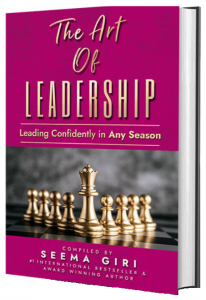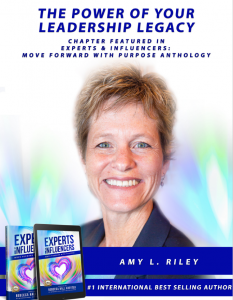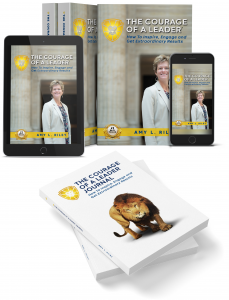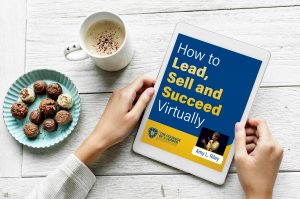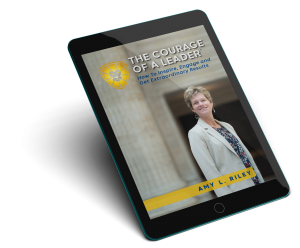In this solo episode, Amy challenges our thinking about how we can make virtual and hybrid meetings more productive, engaging, and worth everyone’s time. She shares how to shift away from default routines and instead be more intentional about the purpose, structure, and flow of our meetings. Amy offers practical strategies that help create meaningful connections, foster collaboration, and reduce wasted time. From rethinking meeting lengths to setting clear norms for collaboration tools, this episode encourages us to transform meetings from energy-drainers into powerful spaces for alignment and action.
Highlights
- Start with Purpose – Learn how clarifying the “why” behind your meeting can lead to better engagement and outcomes.
- Connect Like It Matters – Discover ways to build authentic connection that turns routine meetings into meaningful experiences.
- Keep Interaction Flowing – Explore methods for using platform features that drive real-time collaboration and focus.
- Rethink Your Time Blocks – Consider how breaking free from the 30- and 60-minute defaults can improve energy and attention.
- Align on Tools and Expectations – Uncover how clear agreements on tool use can streamline communication and collaboration.
Resources Mentioned
The Inspire Your Team to Greatness Assessment (the Courage Assessment)
How can you inspire our team to be more proactive, take ownership and get more done?
You demonstrate and empower The Courage of a Leader. In my nearly 3 decades of work with leaders, I’ve discovered the 11 things that leaders do – even very well-intentioned leaders do – that kill productivity.
In less than 10 minutes, find out where you’re empowering and inadvertently kills productivity, and get a custom report that will tell you step by step what you need to have your team get more done.
https://courageofaleader.com/inspireyourteam/
About the Host:
Amy L. Riley is an internationally renowned speaker, author and consultant. She has over 2 decades of experience developing leaders at all levels. Her clients include Cisco Systems, Deloitte and Barclays.
As a trusted leadership coach and consultant, Amy has worked with hundreds of leaders one-on-one, and thousands more as part of a group, to fully step into their leadership, create amazing teams and achieve extraordinary results.
Amy’s most popular keynote speeches are:
- The Courage of a Leader: The Power of a Leadership Legacy
- The Courage of a Leader: Create a Competitive Advantage with Sustainable, Results-Producing Cross-System Collaboration
- The Courage of a Leader: Accelerate Trust with Your Team, Customers and Community
- The Courage of a Leader: How to Build a Happy and Successful Hybrid Team
Her new book is a #1 international best-seller and is entitled, The Courage of a Leader: How to Inspire, Engage and Get Extraordinary Results.
http://www.courageofaleader.com
https://www.linkedin.com/in/amyshoopriley
Thanks for listening!
Thanks so much for listening to our podcast! If you enjoyed this episode and think that others could benefit from listening, please share it using the social media buttons on this page.
Do you have some feedback or questions about this episode? Leave a comment in the section below!
Subscribe to the podcast
If you would like to get automatic updates of new podcast episodes, you can subscribe to the podcast on Apple Podcasts or Stitcher. You can also subscribe in your favorite podcast app.
Leave us an Apple Podcasts review
Ratings and reviews from our listeners are extremely valuable to us and greatly appreciated. They help our podcast rank higher on Apple Podcasts, which exposes our show to more awesome listeners like you. If you have a minute, please leave an honest review on Apple Podcasts.
Transcript
Welcome to the Courage of a Leader podcast. This is where you hear real life stories of top leaders achieving extraordinary results, and you get practical advice and techniques you can immediately apply for your own success. This is where you will get inspired and take bold, courageous action. I'm so glad you can join us. I'm your host. Amy Reilly, now are you ready to step into the full power of your leadership and achieve the results you care about most. Let's ignite the courage of a leader.
Amy Riley:Welcome to today's episode. Hybrid and Virtual Meetings Made Better, more impact, less wasted time. If you have ever walked away from a virtual meeting thinking that could have been an email, that could have been shared with us in video, that could have been shared with us in some kind of one way communication, or you left a meeting and you were multitasking throughout it, or you were worried that others were multitasking during your meeting. This episode is for you. We're talking about how to structure and facilitate virtual and hybrid meetings to have them be more purposeful, more engaging, more effective, so that you and your team can spend less time in unproductive meetings and more time getting real work done. Let's dive in. I've got five top tips for you.
Amy Riley:Here is the first, be purposeful too often, meetings become routine, check ins rather than intentional gatherings with clear objectives before you schedule or lead your next meeting, think about the purpose. What do you want to accomplish? What's the overall purpose for the meeting? And then what's the purpose of each agenda item, each discussion, each interaction? This is not rocket science, but I acknowledge it does take a time and discipline. So consider, what do you want to accomplish with each piece of that meeting? Do you want to generate ideas? Do you want to get buy in? Do you want to surface concerns? Do you want to make a decision? Do you want to hear perspectives? When do you want input? When might it be helpful for that input to be anonymous? When should individuals reflect on their own? When is a collaborative discussion more effective? Where do you need to deliver a critical message with empathy once you have clarity for the overall meeting and each segment of it, use platform features that align with your purpose. If you want anonymous input, create and use a poll. If you want small group lively discussion, leverage breakout rooms if you need engagement, pose open ended thought provoking questions in different ways. The Bottom Line Get In the practice of being intentional about the purpose and structure of your meetings and their components, and you will see a big difference in engagement and in outcomes.
Amy Riley:Top tip number two, connect. Truly connect in a live, synchronous meeting. You have the opportunity to connect in a truly meaningful way, and you should, if not, you shouldn't have a meeting too often, leaders, facilitators, focus too much on the content, and and they miss the human element we have all been part of. I have heard about many meetings where it is just a sharing of the slides, going through the PowerPoint deck. Use this as an opportunity to check in with your team and check in with your colleagues at the beginning of the meeting or at certain points along the way, ask questions such as, what's most important to you right now? Is there anything else that you would like to cover? What are you most excited about? What are you most concerned about? What are you feeling about this? Ask in different ways, using different words and through different features in the platform, you can put a confidence continuum or a feeling continuum up on a slide, and you can have folks annotate on that and indicate with their initials or just with an x, where are they on that continuum? Right? And then you can see. At a Glance where the team collectively is at I worked with one leader. She was an engineering leader, and she had been experiencing low input, low energy. Meetings with her team, we brainstormed ways for her to create more interactive meetings and to engage her self proclaimed introverted team members who needed some time to process and think things through and come up with the best option, right? So she did a number of things. She started sharing meeting agendas ahead of time, shared documents were used to surface questions and concerns and opportunities ahead of the meeting. This way, they had already done some thinking, and they had already identified what's going to be most important for us to discuss and work through when we're together in our synchronous meeting, instead of asking for what they thought or how they felt, she'd propped for ratings, her team was more readily able to share a number one particularly useful activity that we constructed and that she would use periodically, was to create a slide that had a chart on it. Each column would be for a different stakeholder or stakeholder group, and then they're typically a couple of rows. One might ask, How is this stakeholder going to react to the upcoming change, or the new release or the new product? And then sometimes there's another row for how ready are they for the change or the product or the release? Rate these from one to 10, the team would put all their numbers up on the chart, and they could see at a glance where were their stakeholders, likely more excited, likely more ready. Where did the team's thinking align, and where did the team's thinking not align? And it let them know, what can we best leverage? What do we need to discuss here? Where do we need to get on the same page? Her meetings were no longer low energy, with limited input. Create meaningful connections, and your team and your colleagues will be more engaged in your meetings.
Amy Riley:Top tip number three, plan for frequent and varied interaction. Now if you're doing number one, be purposeful, and number two, connect. This will naturally create more interaction. I want you to be even more intentional, making sure that interaction is happening regularly throughout your meetings. Now it does need to be meaningful interaction, right? These virtual meeting platforms offer so many robust features beyond just the screen sharing so many meetings do not take advantage of even a fraction of the functionality available. Keep engagement high by layering in different kinds of interaction methods. I have a list here that I want to go through with you. Ask everybody to respond in chat. Use reactions for a quick yes or no. To give a green check for a yes, they could give a red X for a no. You could ask them to use emotion cons to react to something. Have team members indicate where they stand on a continuum by placing a marker or their initials on a shared slide. Use Google Docs or mural boards for real time collaboration. Set up live polls to gather instant feedback. Use breakout rooms for partner or small group discussions. Annotate on a slide or in a chart to see at a glance everyone's thoughts or positioning or top ideas for various aspects of your work. Experiment with different formats and see what resonates most with your team. Now, I will encourage you to try some interaction more than once. Right? It might take a moment for the team to get used to it, to get comfortable with it, to master the technology. So experiment a few times and then decide what is resonating, what is working for your team. By making interaction a priority, you will increase engagement, and you will have better discussions, better meetings.
Amy Riley:Top tip number four, gonna get tactical with this one, avoid 30 minute and 60 minute meetings. One way to make a virtual meetings more effective, a simple way shorten them, instead of defaulting to the 30 minutes or the 60 minutes that can be. Typical try 25 minutes or 50 minutes? Why? A couple of reasons. People need transition time right, whether it's to grab water, stretch, take a bio break, check in on a colleague or someone else that's at home, or let the dog out right or check on something in the office by giving your team breathing room, you show respect for their time and their energy, and they're going to have that moment to refuel recenter, and they'll be more engaged in your meetings. And also, because we can expand interactions to fit the time available. If we have a few more minutes, we'll talk for a few more minutes. So being purposeful and knowing what you want to accomplish with each section of your agenda will help you better estimate how much time do we really need here, and if you only need 40 minutes, schedule that 40 minute meeting
Amy Riley:number five, our final top tip, agree on ways of working for collaboration, tools. Why is this here? So we're talking about meetings. Yet collaboration doesn't just happen in meetings. It continues in between them. That is why it is essential to line on how you're going to use your tools and platforms. How are you going to use your video conferencing platforms? How are you going to use collaboration programs like Microsoft Teams and slack? How are you going to use file management systems like Google Drive or SharePoint. How are you going to use work management platforms like Trello or click up across all the platforms and tools that you use clarify, make sure that there is understanding about when should webcams be on, when should they be off, where should files be stored? How are we handling version control? For which meetings will you use an AI note taker? How and where will those meeting notes be shared or stored? What's the expectation for reviewing and actioning on them? When should you at tag someone? When is it unnecessary? How will you flag key decisions that have been made. How will you mark a message so that people know that action needs to be taken, which spaces are for static documents and which allow for real time updates, what response times are expected in different tools, by having an open discussion about collaboration norms, you eliminate confusion, and you're setting your team up for success. And of course, these conversations are not one and done. They need to be revisited as the work evolves. You want to seamlessly be able to use the tools in your meet in your meetings, making them an integral part of the workflow and then infinitely more productive. Virtual and hybrid meetings do not have to be a constant drain on your energy. Then it can instead be energizing. Meetings have such a bad reputation right now make your meeting something that folks look forward to by being purposeful, fostering connection, varying interactions, respecting time and aligning on collaboration tools, you can make your meetings more impactful, less wasteful.
Amy Riley:Start implementing just one of these strategies in your next meeting, and you will see more engagement. Thank you for tuning in. If you found today's episode valuable, please share it with a colleague or a team member who is interested in being part of more productive and engaging meetings. Until next time, lead your meetings with clarity and with courage.
Amy Riley:Thank you for listening to the Courage of a Leader podcast. If you'd like to further explore this episode's topic, please reach out to me through the courage of a leader website@ www.courageofaleader.com I'd love to hear from you. Please take the time to leave a review on iTunes that helps us expand our reach and get more people fully stepping into their leadership potential. Until next time, be bold and be brave, because you've got the courage of a leader. You


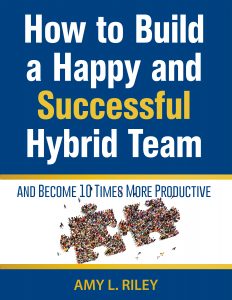
 A Summary of The Courage of a Leader® 4 Pillars
A Summary of The Courage of a Leader® 4 Pillars